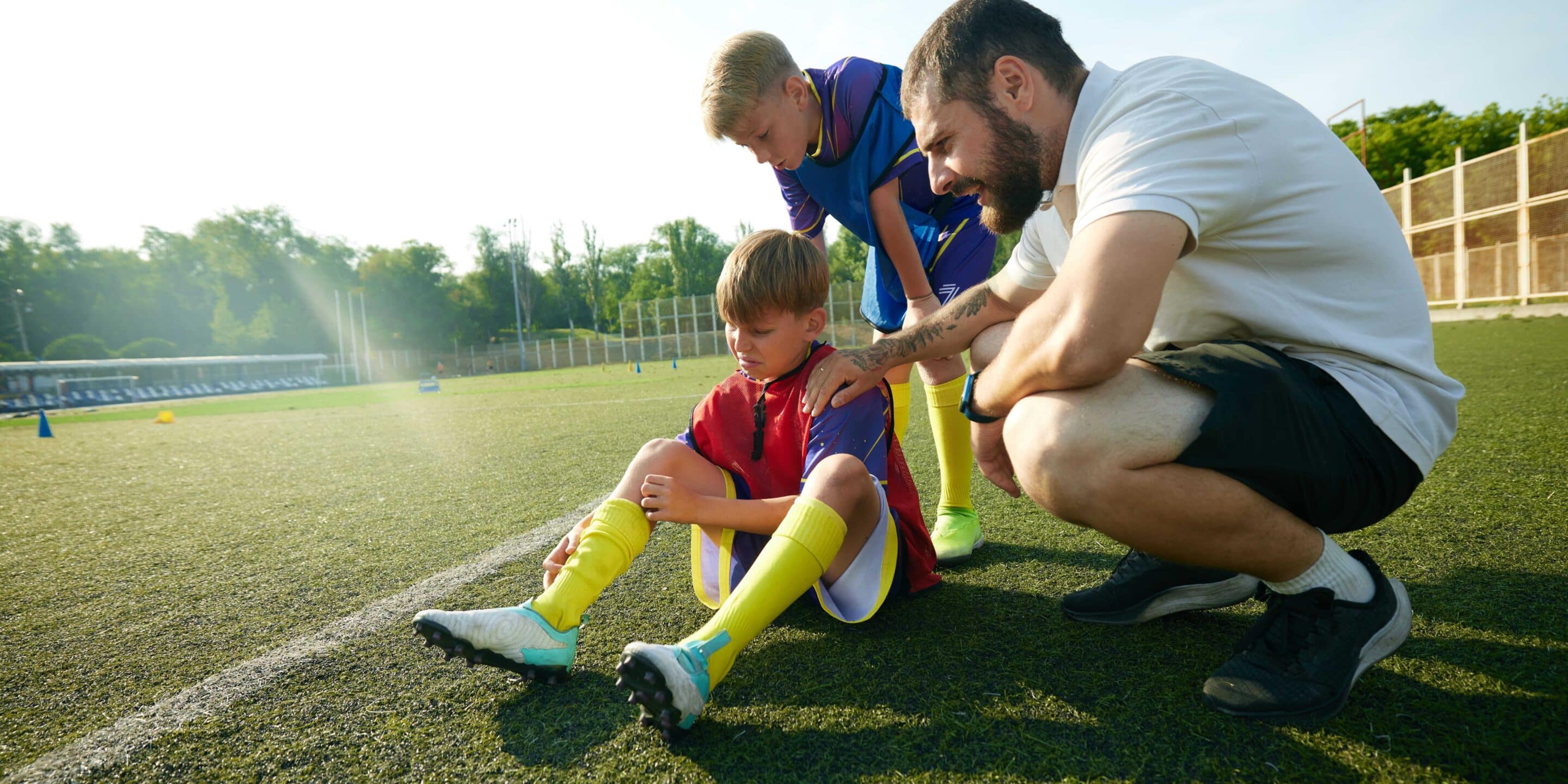Did you know that over 25% of all sports injuries involve the foot and ankle? Whether you’re a seasoned athlete or just enjoy recreational activities, the risk of foot and ankle injuries is significant. Understanding these injuries and how to prevent them is essential for athletes of all levels.
The Importance of Awareness and Prevention
Staying informed about common foot and ankle sports injuries can help you avoid unnecessary downtime and long-term complications. Awareness, early identification, and preventive measures—including the use of custom orthotics—are key to maintaining peak performance and staying injury-free.

Types of Foot and Ankle Sports Injuries
Sports injuries fall into two categories: acute and chronic. Acute injuries, such as ankle sprains, occur suddenly, while chronic injuries like Achilles tendinitis develop over time due to repetitive stress.
Here’s a breakdown of some of the most common injuries associated with specific sports:
- Basketball & Soccer: Ankle sprains are prevalent, caused by sudden direction changes, jumping, and landing awkwardly.
- Running: Runners frequently experience Achilles tendinitis, resulting from repetitive strain on the Achilles tendon.
- Football: Players are susceptible to fractures and dislocations due to high-impact collisions and abrupt stops.
Each sport places unique demands on the feet and ankles, increasing the risk of specific injuries. Custom orthotics can provide personalized support, reducing the stress placed on feet and ankles and preventing common sports injuries.
Symptoms and Identification
Recognizing the early symptoms of a foot or ankle injury can make a significant difference in recovery. Typical symptoms include:
- Pain: Often immediate and sharp in acute injuries like fractures, or gradual and throbbing in chronic conditions such as plantar fasciitis.
- Swelling: Swelling is common in both acute and chronic injuries and can indicate inflammation or tissue damage.
- Instability: A feeling of weakness or instability in the ankle could point to ligament damage from a sprain or dislocation.
For example, a basketball player might experience sudden pain and swelling after landing on another player’s foot—classic signs of an ankle sprain. Conversely, a runner who develops stiffness and pain in the Achilles after long runs may be dealing with Achilles tendinitis.
If you’re unsure about the severity of an injury, it’s crucial to contact our office and schedule an appointment for an accurate diagnosis. Custom orthotics may also be recommended to improve foot alignment and prevent further strain during recovery.
Treatment Options
For initial injury management, the RICE protocol (Rest, Ice, Compression, Elevation) is a standard approach:
- Rest: Stop the activity to prevent further damage.
- Ice: Apply ice to reduce swelling.
- Compression: Use a bandage to support the injury and limit movement.
- Elevation: Keep the injured area elevated to reduce swelling.
For more severe injuries, treatment options may include:
- Physical Therapy: Strengthening exercises to restore mobility and prevent future injuries.
- Bracing: Providing support to the injured area while it heals.
- Surgery: Required in extreme cases, such as fractures or torn ligaments.
Custom orthotics can be a valuable part of the treatment plan, offering additional support to the foot and ankle, preventing further injury, and speeding up the recovery process. These specially designed inserts can address foot mechanics and reduce pressure on injured areas, helping athletes regain full mobility.
Rehabilitation timelines vary based on the injury. For example, a mild ankle sprain may take 1-2 weeks to heal, while a more severe fracture could require several months of recovery and physical therapy.
Prevention Strategies
Preventing foot and ankle sports injuries begins with proper preparation:
- Warm-Up and Cool-Down: These routines are essential to prepare muscles and ligaments for physical activity and help reduce stiffness afterward.
Example: Dynamic stretches like leg swings or calf raises are excellent for activating muscles before high-impact sports. - Strength and Flexibility Exercises: Incorporate exercises that target foot and ankle stability, such as heel raises, ankle rotations, and resistance band stretches.
- Footwear and Custom Orthotics: Choosing the right footwear designed for your sport is crucial. Running shoes should offer good arch support, while basketball shoes should provide ankle stability. Custom orthotics can further enhance foot support, ensuring that your feet are properly aligned during physical activities, which reduces the risk of injury.
Sport-Specific Injury Prevention
Each sport carries its own risk for foot and ankle injuries, so tailored prevention strategies are crucial.
- Basketball: Focus on ankle strengthening exercises and wearing supportive high-top shoes to prevent sprains.
- Soccer: Use agility training drills and ensure proper warm-ups to minimize the risk of tendon injuries.
- Running: Gradually increase mileage and incorporate rest days to prevent overuse injuries like Achilles tendinitis and plantar fasciitis. Consider using custom orthotics for better shock absorption and foot alignment.
Expert athletes recommend regular training sessions to maintain strength and flexibility, reducing the likelihood of injuries during competition.
Stay Proactive to Prevent Sports Injuries
For athletes, foot and ankle health is essential for both performance and longevity in sports. Being proactive with injury prevention, quick identification of symptoms, and seeking proper treatment—including the use of custom orthotics—can help you recover faster and get back to doing what you love.
Schedule a Consultation Today
Don’t wait until an injury sidelines you! Take a proactive approach to your foot and ankle health. Contact our Berkeley clinic today to schedule a personalized consultation. Our expert podiatrist will guide you through prevention, treatment, and how custom orthotics can help support your feet and ankles for better performance and injury prevention.
Stay informed, stay healthy, and keep performing at your best!
